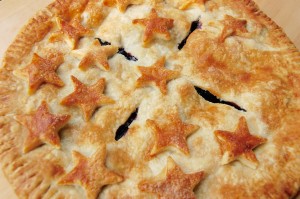Upside-Down Cake Recipe
Though you can make this cake with pretty much any fruit, bananas are my go-to, mostly because they’re always in season and they caramelize so nicely. Also you don’t see too terribly many banana upside-down cakes. But they’re delicious. This one is adapted from an early Craft restaurant cookbook, from back before Tom Colicchio was a caricature. It’s a great oh-no-I-forgot-we’re-having-company-tonight cake. A low-investment knockout. You’ll need:
For the Topping
3 medium bananas (or equivalent of peaches, apricots, pineapple, cherries, apples or pears)
7 ounces (1 cup) sugar
2 ounces (4 tablespoons) butter
For the Cake
7.5 ounces (1 1/2 cups) all-purpose flour
2 teaspoons baking powder
7 ounces (1 cup) sugar
1/2 teaspoon kosher salt
2.5 ounces (1/3 cup) melted butter
2 eggs, room temperature
4 ounces (1/2 cup) buttermilk, room temperature
2 teaspoons vanilla extract

